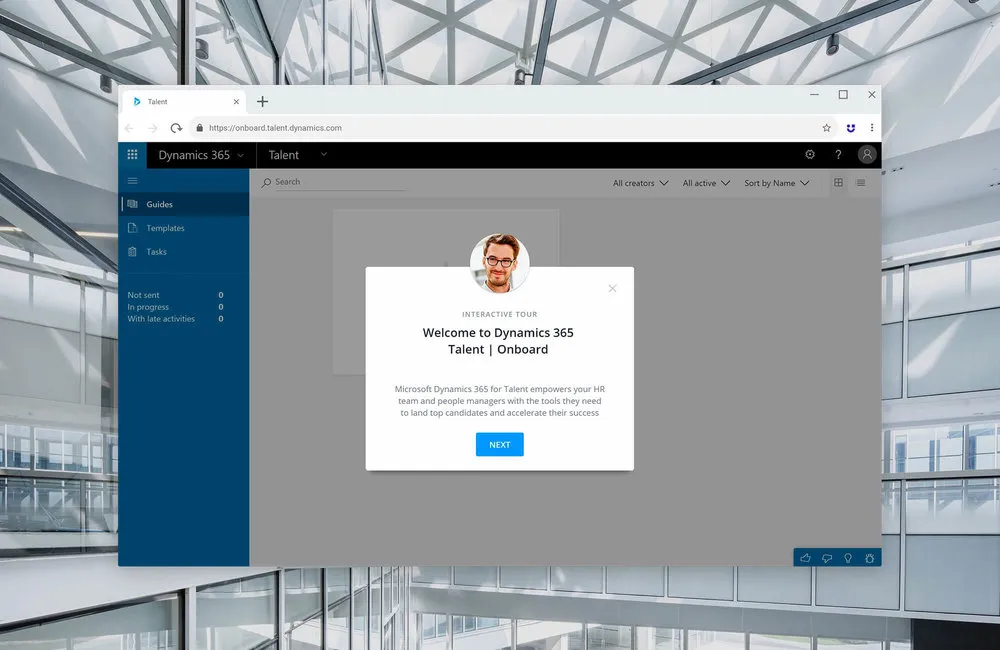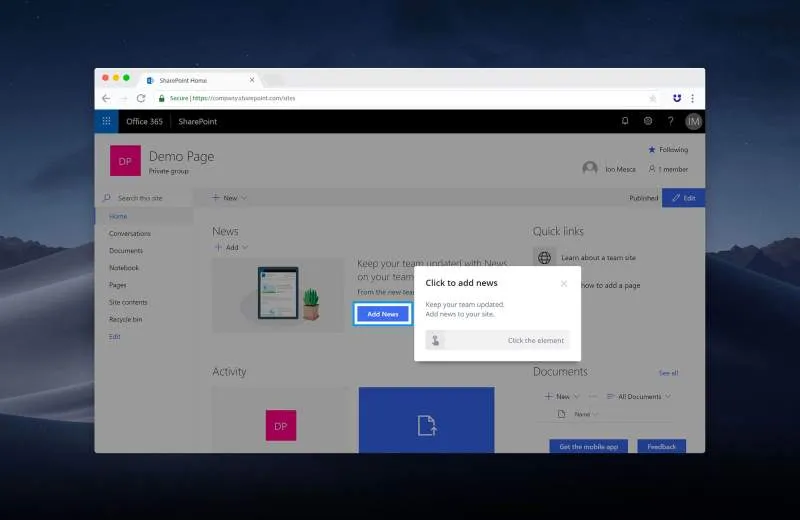Allow People to Keep Pace With Technology

Enabling people to interact with technology is just as (or maybe even more) important as coming up with new digital solutions. If a user can’t interact with a product or service – and no matter how valuable the possible outcome of its usage might be – such a product or service is rendered useless.
Digitalization is still an ongoing issue as many users still struggle with digital technology. This is one of the main reasons why introducing electronic performance support using a digital adoption platform is becoming the new norm in every large corporation worldwide.
But before I discuss this topic in detail, let’s quickly go back in time to see just how important it is to enable people to use new technology to drive adoption …
Table of Contents
Technology and Adoption
In the mid 15th century, a German blacksmith named Johannes Gensfleisch zur Laden zum Gutenberg – fortunately also known as simply Johannes Gutenberg – revolutionized printing technology with the introduction of the mechanical movable type.
The invention of the printing press didn’t simply disrupt the reproduction of texts: It also massively shaped the course of human history.
The process of mass-producing books gave birth to the Renaissance, the Age of Enlightenment, modern vernacular languages, and the Scientific Revolution, which ultimately led us to the creation of Mars Rovers, Artificial Intelligence, and the Internet.
The printing revolution transformed our world by democratizing access to knowledge.

But that’s just one aspect of the story.
A book is only useful if people can read. A book is a simple instrument, and educating people on how to read one is just as important as providing them with easy access to libraries.
Simply put, the value of a book is connected to its fruition. The mass-production of books initiated meaningful changes due to the development of institutions for education and literacy that spawned from the cathedral schools that were founded in the Early Middle Ages and spread throughout the 15th and 16th centuries during the scholastic movement.
The 20th Century: Personal Computers and Accessibility
Fast forward a few hundred years.
Computers entered our lives as gigantic machines that were operated with a patchwork of cables followed by batch computing and those funny punched cards that made computation a bit less cumbersome.
Back then, there was no user interface and operating computers meant interacting with the physical hardware structure of the machine.
Computers were bulky, expensive, and inaccessible to people who weren’t trained as operators.
The advent of UNIX and the command line interface led to timesharing mainframes, and finally, more people had access to computers, even if this meant learning a new language in order to perform even the simplest task.

It took a few years before personal computers became truly available to the masses.
Intel, IBM, Microsoft, and Apple played a major role during the dawn of the Information Age. And just as Gutenberg created a perfectly scalable printing technology, the pioneers of the Digital Age introduced economies of scale in the hardware sector and allowed personal computers to become wide-spread, thereby ushering us into the contemporary digital transformation.
Microsoft bolstered the democratization of personal computers through the introduction of MS-DOS, a far less scary version of UNIX. Then Xerox soon introduced a graphical user interface (GUI) to its operating system, which was even more appealing thanks to its intuitive frontend based on icons, windows, sliders, and scroll bars.
Ultimately, this led us to more familiar environments such as Windows and MacOS. The rest, as they say, is history.
Without Microsoft, Intel, and Apple, there would be no digital transformation. The development of microcomputers in combination with intuitive user interfaces allowed computers to infiltrate every aspect of our lives.
Add mobility to the mix (with the rise of the iPhone and all the mobile devices that followed) – together with the Internet of Things – and it’s easy to understand how we ended up in this magical era in which everything is controlled through sophisticated software, from homes, to fridges, cars, processes, public institutions, commerce, trade, banking, and everything you do at work.
The Scope of Digital Transformation
Digital transformation is a change in mentality that revolves around human-centric processes. The main idea underlying digital transformation is to have access to a large amount of data that allows companies, agents, and institutions to oversee the entire customer journey and eliminate friction at every touchpoint.
Digital transformation has the objective of streamlining processes through customization, immediate access to information and transactions, personalization, and better customer experience.
Digitization is only a by-product of the digital disruption because, in order to provide immediate access to relevant information, products, or services on-demand anytime and anywhere, processes need to take place in a fast-paced digital space.
This leads to digitalization and digitization and the fact that we all have to interact with several different software applications on a daily basis on multiple occasions.
The Pace of Adoption
The question is, are we all onboard with the digital transformation thanks to having easy and ubiquitary access to hardware and software?
Not really.
One piece of the puzzle is still missing.
The evolution of printing technology only made sense in a world in which people were able to learn how to read. The digital revolution is only meaningful if everybody is fully capable of interacting with modern software.
And unfortunately, this is not the case at all.
Almost 90% of businesses mention that digitalization is their number one priority despite the fact that less than 50% of the managers and executives declare their companies to be ready for it according to a study conducted by Deloitte.
Obstacles to Digital Adoption
There are three main reasons behind such a slow digital adoption rate.
Firstly, there’s currently no formalized education that can deal with the sheer amount of applications we need to use at work and in our everyday life.
Secondly, whereas the writing system is fairly easy to standardize, applications that serve different purposes present a myriad of very different interfaces with different challenges.

We’re slowly developing a familiar language with our user interface elements (three lines or dots are always connected to a burger menu, buttons perform actions, arrows indicate a “swipe” option…), but we all have a different background – what seems intuitive to me might not be as intuitive to another person. Symbols and graphic elements don’t have a universal meaning yet.
It suffices to say that some of the most common searches in Google involve people asking how to use WhatsApp, Instagram, or Netflix even though, for many, the use of such applications is pretty self-explanatory.
Finally, applications, especially at work, are constantly becoming more complicated due to integrations and embedded processes.
This complexity is linked to a) the need to access and process more information and trigger automation, b) the amount of internal operating procedures employees are required to execute, and c) necessary integrations in the IT ecosystem.
The Case for Enterprise Software
In particular, the complexity of enterprise software also seems to be connected to legacy issues, customization, and the number of tasks that need to be performed.
The problem is that no matter how intuitive a user interface seems to be, the obstacle is knowing how to carry out specific processes.
Think of a user interface as a street layout in a city. Even if you’re in a new town, you can easily pinpoint your location by looking at the street names. You can also go to the neighboring area by following the signs. But how do you reach a distant location without a map or a navigation system?
The same occurs in software. It’s easy to go from one page to another, but it’s impossible to carry out complicated multi-page operations without having access to a manual or tutorials.
In a recent article on Reuters, it is reported that SAP users, for example, feel left behind when it comes to accessibility in cloud-based services. They request more guidance in the execution of their digital strategy and performance support when facing the challenges linked to the migration to the new system.
Not everybody can profit from the digital transformation, and such discrepancies affect the job market on both sides: Employers, on the one side, who struggle to recruit a digital workforce (40% of businesses admit that the lack of appropriately-skilled personnel is one of the major obstacles to digital transformation) and job seekers, on the other, who aren’t competitive in the market due to the lack of digital skills.
Education allowed anybody to become knowledgeable. It is now time for technology to allow anybody to be part of the digital revolution.
Digital Adoption: The Mission to Transforming Every Individual Into a Digital Native
Our task is to allow everybody to become familiar with every software application from the very start. That’s why we developed our Digital Adoption Platform (DAP). Userlane uses its electronic performance support system (EPSS) to assist users directly in software applications.
Electronic performance support consists of providing just-in-time contextual help to software users while they are performing a task in a specific software environment (at work, in an ATM interface, online while registering a new car or requesting an ID…).
Such a form of support is synchronous, meaning that unlike class training or tutorials, users are assisted directly on-screen in the application they’re using while they’re going through a process.
It’s essentially like having an expert sitting next to each user that shows them how to accomplish tasks in real-time.

Userlane provides in-app contextual help based on what objectives users are pursuing and guides them step-by-step to their goals.
In-line support can have different forms. Older EPSS solutions show relevant resources and “how-to” articles in a sidebar directly within an application while users perform tasks.
Other platforms use a split-screen approach to show on-demand step-by-step video tutorials.
Other systems use on-screen suggestions, modals, and hotspots to guide users through steps in digital processes.
Userlane provides a more interactive experience through interactive on-screen guidance.
Such software adoption platforms aim to increase user adoption by supporting users in real-time and allowing them to access even the most advanced features of the software application without spending time reading documentation or watching video tutorials.
Userlane offers users fully interactive walkthroughs for digital processes in any browser-based application.
Such a form of electronic performance support eliminates the risk of procedural mistakes and enables anybody to operate any software as a digital native without any formal training or access to training materials.
Userlane allows anybody to be proficient in every application by showing users how to accomplish tasks in a software application and pushing for specific interactions (clicks, double clicks, hover, mouse down events, text input, drag and drop…) in the user interface.
An intelligent on-screen Virtual Assistant presents users with contextual interactive guides and walkthroughs that can be triggered to either train and onboard new users or to support existing users while they work in an application.

Large corporations implement Userlane on different applications (proprietary or not) in their software stack as an add-on to speed up software rollouts, boost software adoption, increase the ROI derived from the implementation of a new application, speed up change management processes, and eliminate inefficiencies connected to standard training methods, such as logistic constraints, time, the production and maintenance of training material, and retraining sessions after updates.
Democratizing Digital Transformation
Software regulates every aspect of our lives. Soon, it’ll be impossible to by-pass interaction with machines.
Brick-and-mortar banks and stores are slowly disappearing and public institutions are trying to digitize every interaction with their citizens. Companies are run through simulations and every industry is led by digital processes that optimize performance and customer experience.
The advantages of the digital revolution are endless. But digitalization, as any other transformative process, is linked to risks. And the most urgent matter is making sure that people move at the same pace.
All-in-all, digital transformation hinges on creating meaningful experiences for people.
Machines are just instruments in the evolution of digital operations.
Nobody should be left behind in the Digital Age.
The printing press and schools led to the democratization of books and knowledge. And now, interactive guidance is here to democratize software adoption and allow anybody to thrive in the digital transformation.

